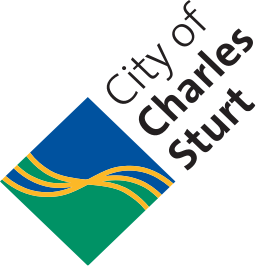Urban Heat Mapping shows us where heat builds up across our City in hot weather. By mapping areas of excessive heat, we can better adapt to climate change. It gives us insight into urban design, green infrastructure, and using different materials to manage temperatures within the City.
We've done Urban Heat Mapping together with the Cities of Port Adelaide Enfield and West Torrens. We've also worked with the Adelaide and Mount Lofty Ranges Natural Resource Management Board.
The project started as part of the AdaptWest Regional Climate Change Adaptation Plan to help us adapt to climate change.
What is an urban heat island?
Our urban environment is made of buildings, roads, footpaths and structures. These have replaced natural surfaces like trees, grass and bush. Artificial surfaces tend to hold more heat which can make our urban environments hotter. They are also impervious, which means less moisture is available to cool the area through evapotranspiration. This means that city areas are hotter than the natural environment. It's called the Urban Heat Island effect.
As part of this project, we defined heat islands with certain boundaries. Areas were 125m2 where the temperature measured more than 2°C higher than average temperatures.
Hot spots were 2m2 areas where the temperature measured at least 2°C higher than average temperatures. This helped us see the specific land uses of each area.
Why urban heat mapping?
Because of climate change, we're already experiencing hotter and more frequent heatwaves in the West. These heatwaves impact the health and wellbeing of our community. They also affect our ability to offer key Council services. High temperatures can affect community health with increased mortality, hospital admissions and ambulance callouts.
Urban heat will continue to be a problem as we build more houses with smaller backyards in densely populated areas. With fewer trees and green areas, our urban environment will get hotter.
The urban heat mapping project gives us a 'snapshot' of temperatures across our region.
You can see our urban heat maps.
How we collect data
We collect thermal data that shows us urban heat mapping. We do this with specialist remote sensing aircraft across 110 suburbs covering the Cities of West Torrens, Charles Sturt and Port Adelaide Enfield.
The fly-over occurred on 9 February 2017 during the day (11am-4pm), and again at night (11pm-3am) in a north-south direction 3,000 metres above the ground. This produced maps at a resolution of two metres.
By collecting data at day and night, we could see how heat from the day radiates from different materials and surfaces in the night.
The results
You can read the Western Adelaide Urban Heat Island Mapping Project report.
We're using the results to help us plan the design of urban areas. It helps us with urban greening, where we might prioritise tree planting or water sensitive urban design.
Key findings for the City of Charles Sturt
- The hottest suburbs were Ridleyton, Hindmarsh, Bowden, Brompton and Renown Park.
- The coolest areas were near West Lakes, around the golf courses in Grange and Seaton, and along the coast.
- 20.1% (20,908 residents) of Charles Sturt residents live within a daytime heat island, which was the highest proportion compared with Port Adelaide Enfield (17.2%) and West Torrens (5.6%). The most severe of these urban heat islands are in Brompton, Hindmarsh, Albert Park and Hendon.
- Tree lined streets were at least 8°C cooler than nearby streets with fewer or no trees.
- Green infrastructure (trees, grass, open space) provided cooling benefits compared with infrastructure like roads, footpaths and buildings.
- Water Sensitive Urban Design (WSUD) including rain gardens have a localised cooling effect.
- Artificial turf measured 8.1°C warmer than the average surface temperature across the region.
- Rubber softfall commonly used in playgrounds had a surface temperature of 52°C.
More information
Waste & Sustainability team
8408 1111
council@charlessturt.sa.gov.au
